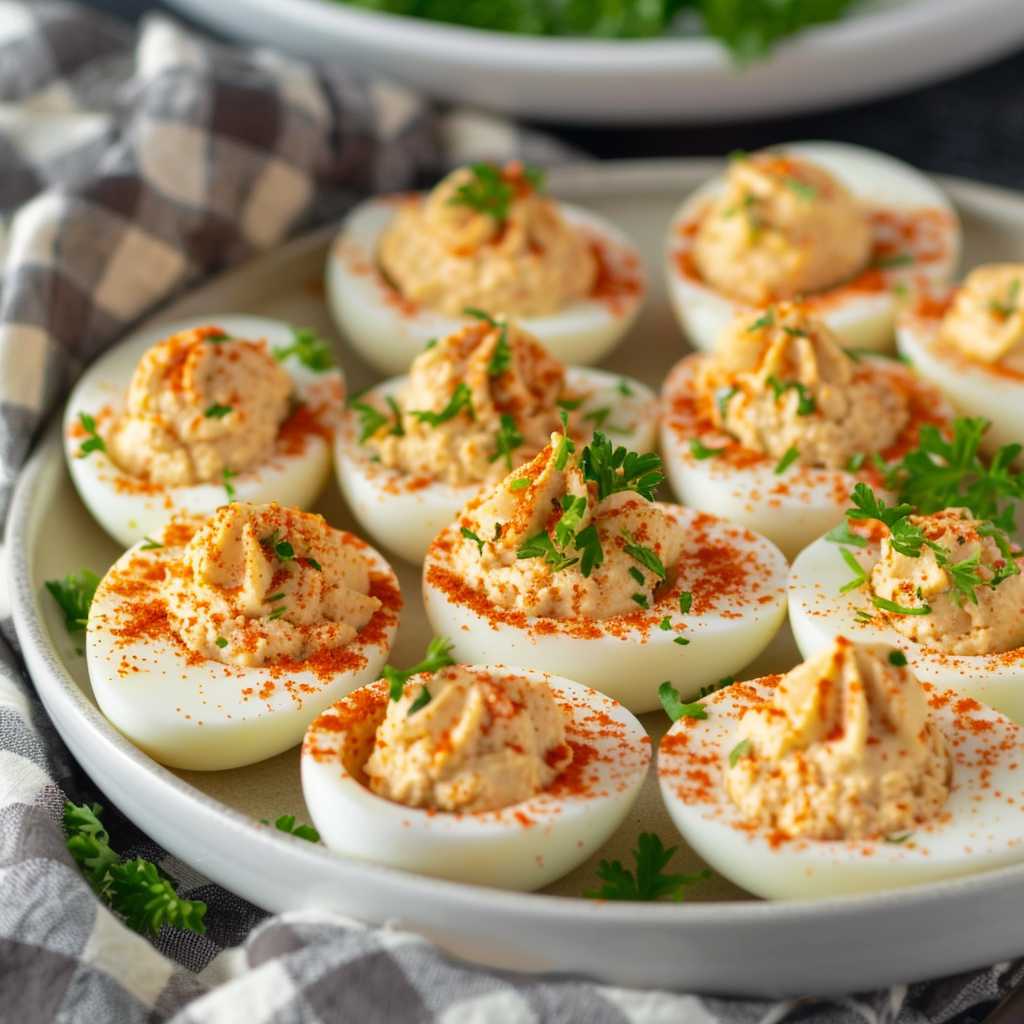The Delectable World of Deviled Eggs: A Culinary Staple with Global Variations
Deviled eggs, a popular dish known for its piquant flavors, has a rich culinary history that spans across various continents and cultures. Often featured as a staple at picnics, parties, and potluck gatherings, the simplicity of its creation, coupled with the potential for customization, have cemented deviled eggs as a beloved appetizer and snack. This article will explore the history of deviled eggs, their traditional preparation, variations around the world, and nutritional information, concluding with some quick statistics for perspective.
History and Origin of Deviled Eggs
Unlike many classic dishes, the origins of deviled eggs can be traced back with an impressive level of historical clarity. The concept of stuffed eggs began in ancient Rome where they were traditionally boiled and seasoned with spicy sauces, often served during gatherings such as feasts and communal meals. The term “deviled” in connection to food, originated much later; it was first referenced in print in the 18th century, denoting the process of seasoning food with spices and condiments to give them a fiery flavor.
Over time, the popularity of deviled eggs spread throughout Europe and eventually arrived on American shores where they evolved into the variety we know today. The term “deviled”, from earlier times indicating a hot or zesty flavoring, by now mostly pertains to the addition of ingredients like mustard and mayonnaise, though some still prefer spicier versions.
Traditional Preparation: Techniques and Ingredients
The quintessential recipe for deviled eggs involves a boiled egg, which is peeled, cut in half, and whose yolks are hollowed out and mixed with various other ingredients. The basic elements include mayonnaise (or another cream binder), mustard, vinegar or lemon juice for tanginess, along with salt and pepper for seasoning. The yolk mixture is then spooned or piped back into the white egg halves.
Modern recipes often incorporate a range of ingredients such as paprika (primarily used as garnish), herbs like dill or chives, pickles, bacon bits, cheese, or other dressed-up derivations for uniqueness.
Variations Across the Globe
Whereas the core components of deviled eggs remain constant across most recipes, cultural adaptations and regional variations abound.
United States: The Classic American Twist
In the United States apart from traditional recipes modern renditions see inclusion of relish or pickle juice for an added dimension. Certain Southern regions might integrate pimientos or horn up the heat with cayenne pepper or hot sauce.
Europe: Cultural Crossover Delights
Europe’s take on deviled eggs includes resorts like ‘mimosa’ eggs in France where yolks are crumbled akin to the yellow mimosa flowers and topped onto the filled halves. Mediterranean versions might swap mayo for tahini or olive tapenade.
Asia: Fusion Varieties
Asian influenced renditions leverage flavors like wasabi or curry powder to invigorate the yolks or replace common elements with tofu to accommodate vegetarian diets.
Nutrition Overview
While delicious and satisfying, it’s important to recognize the nutritional composition when considering deviled eggs as a part of dietary intake.
Each egg provides protein that satiates and supports muscle maintenance but also contains cholesterol present in yolks which should be consumed within recommended daily allowances. On a positive note, eggs are sources of vitamins D and B12 among other nutrients.
However customizing stuffing can escalate calories – swapping full-fat mayonnaise with Greek yogurt could offer a healthier twist while keeping palatable richness intact.
Notes
*Image description: A white ceramic plate filled with homemade deviled eggs garnished with sprinkled paprika and fresh parsley leaves sitting atop a checkered tablecloth.*
